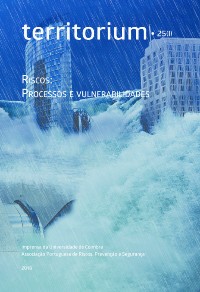Please use this identifier to cite or link to this item:
https://hdl.handle.net/10316.2/94647| Title: | Risco de fadiga em ambiente térmico frio: caso de uma indústria de peixe congelado | Other Titles: | Risk of fatigue in cold thermal environment: the case of the quick-frozen fish industry | Authors: | Talaia, Mário Teixeira, Leonor Tavares, Isabel |
Keywords: | Cold thermal environment;thermal sensation;EsConTer index;THI;PPD;Ambiente térmico frio;sensação térmica;índice EsConTer;ITH;PPD | Issue Date: | 2018 | Publisher: | Imprensa da Universidade de Coimbra | Abstract: | Em diferentes indústrias caraterizadas com ambientes quentes, confortáveis e/ou frios, os trabalhadores devem usar
um vestuário em função da atividade desenvolvida. O ambiente térmico desempenha um papel muito importante
no melhoramento das condições de trabalho, com impacto direto na produtividade do trabalhador. As caraterísticas
termohigrométricas de um ambiente térmico podem afetar o bem-estar, a fadiga e a produtividade do trabalhador.
Neste trabalho é avaliada uma secção de embalamento de peixe demolhado ultracongelado, considerado um ambiente
térmico frio. Foram registados valores da temperatura e humidade relativa do ar, e da sensação térmica real do
trabalhador, numa escala de cores. Os resultados obtidos mostram que o padrão de sensação térmica depende do tipo
de embalamento, que influencia a sensação térmica dos trabalhadores. In industries characterized with different environment conditions, as warm, comfortable and/or cool environments workers clothing should be appropriate for their specific activity. The thermal environment plays an important role in improving working conditions, with a direct impact on worker productivity. The thermohygrometric characteristics of a thermal environment can affect the well-being, fatigue and productivity of workers. In this study the quick-frozen fish section, considered a cold thermal environment, is evaluated. The values of temperature and relative humidity, as well as the real thermal sensation of the worker were collected in a colour scale. The results show that the pattern of thermal sensation depends on the type of packaging which influences the thermal sensation of workers. |
URI: | https://hdl.handle.net/10316.2/43275 | ISSN: | 1647-7723 (digital) 0872-8941 |
DOI: | 10.14195/1647-7723_25-1_8 | Rights: | open access |
| Appears in Collections: | Territorium |
Files in This Item:
| File | Description | Size | Format | |
|---|---|---|---|---|
| risco_de_fadiga_em_ambiente_termico_frio.pdf | 4.9 MB | Adobe PDF |  |
Items in DSpace are protected by copyright, with all rights reserved, unless otherwise indicated.
